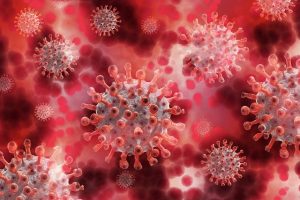Fabkin hormone complex regulates pancreatic islet function
- Mifepristone: A Safe and Effective Abortion Option Amidst Controversy
- Asbestos Detected in Buildings Damaged in Ukraine: Analyzed by Japanese Company
- New Ocrevus Subcutaneous Injection Therapy Shows Promising Results in Multiple Sclerosis Treatmen
- Dutch Man Infected with COVID-19 for 613 Days Dies: Accumulating Over 50 Virus Mutations
- Engineered Soybeans with Pig Protein: A Promising Alternative or Pandora’s Dish?
- Severe Fever with Thrombocytopenia Syndrome (SFTS): A Tick-Borne Threat with High Mortality
Fabkin hormone complex regulates pancreatic islet function
Nature: Fabkin hormone complex regulates pancreatic islet function.
According to the body’s energy requirements, adipose tissue is the most effective place for energy and nutrient storage and release.
This highly conservative function of adipose tissue ensures the safe storage of energy when it is sufficient, and it is also an indispensable part of survival under the condition of limited nutrition.
In addition, adipose tissue is also an important endocrine organ responsible for the regulation of systemic metabolism. Its metabolic effects are mediated by various hormones, inflammatory factors, adipokines and lipid factors.
They play a key role in systemic metabolic homeostasis. Changes in tissue endocrine output link obesity with a series of metabolic disorders.
For example, uncontrolled or chronic lipolysis associated with insulin resistance and/or insulin deficiency can disrupt metabolic homeostasis [1,2] .
In recent years, cytoplasmic adipose tissue fatty acid binding protein ( FABP ) has been found to be a key molecule that integrates intracellular lipid signaling under metabolic stress. Adipocytes can express a major FABP subtype-aP2 (FABP4) and a minor FABP subtype-mal1 (FABP5) .
Studies have shown that mice lacking these lipid chaperones show resistance to obesity. A variety of metabolic abnormalities have obvious protective effects.
In addition, recent studies have found that the hormone FABP4 is closely related to lipolysis [2,3] .
However, although studies in preclinical models and human diseases have found that the level of circulating FABP4 is closely related to cardiometabolic diseases, the mechanism of FABP4 has not been known.
On December 8, 2021, the Gökhan S. Hotamisligil team from School of Public Health of Harvard University in the United States published an article entitled A hormone complex of FABP4 and nucleoside kinases regulates islet function in Nature , which proved that the hormone FABP4 has a role in pancreatic β-cells.
Substantial impact, and it was discovered for the first time that it can form a functional hormone complex (Fabkin) with adenosine kinase (ADK) and nucleoside diphosphate kinase (NDPK) to regulate the levels of extracellular ATP and ADP, and affect β cell function.
The energy state is combined with the function of metabolic organs and provides a potential target for the treatment of metabolic diseases.

The researchers found that compared with littermate wild-type (WT) mice, the number of islets in the pancreas of Fabp4 knockout (Fabp4 -/- ) mice was significantly increased, and the mass of β cells and pancreatic insulin content were also significantly increased.
At the same time, the use of a monoclonal antibody targeting FABP4 (CA33, referred to herein as active antibody (a-Ab)) to treat WT diet-induced obesity (DIO) mice can significantly reduce 6-hour fasting blood glucose levels and improve glucose Blood glucose drift during tolerance test.
Consistent with Fabp4 -/- mice, the number of pancreatic islets in DIO mice treated with a-Ab also increased, and the mass of β-cells tended to increase.
This indicates that the hormone FABP4 can affect the quality of β cells in the body.
It is worth mentioning that the researchers found that FABP4 is not expressed in pancreatic islet endocrine cells or the clonal β-cell line INS1.
Therefore, it is of great value to use these cells to study the specific functions and mechanisms of the hormone FABP4.
It is known that FABP4 is increased in type 2 diabetes (T2D) and is related to body mass index (BMI) . So can the hormone FABP4 in type 1 diabetes (T1D) be regulated independently of obesity and insulin resistance, and directly lead to β-cell dysfunction?
The researchers found that compared with controls without diabetes, the serum FABP4 levels in patients with new-onset T1D (<1 year) were significantly increased, while the serum FABP4 levels in older T1D patients with longer duration were found to be similar to glycosylated hemoglobin (HbA1c).
The level is significantly correlated, suggesting that FABP4 is related to blood sugar control. Mouse experiments also yielded similar results.
Therefore, circulating FABP4 levels are regulated immediately before and after glycemic control is impaired, indicating that the hormone FABP4 may play a role in the pathogenesis of β-cell failure and T1D and T2D.
At the same time, using a-Ab to target FABP4 secreted in the mouse model, it was found that a-Ab treatment mediates T1D protection, and a-Ab mediates the improvement of blood glucose control in the T2D DIO model, and these are all related to β Cell quality is related to the improvement of function.
However, unlike the results of in vivo experiments, the researchers in this article found that recombinant FABP4 (r FABP4) had almost no effect on the glucose-stimulated insulin secretion (GSIS) of mouse pancreatic islets in vitro , even at super-physiological doses.
Therefore, the researchers speculate that the hormone FABP4 may bind to other proteins to stimulate its biological functions.
The experimental results proved this conjecture. There is a complex formed between FABP4 and ADK and the strong affinity of ADK and NDPK in the body, and a-Ab can target this complex through the interaction with FABP4 and NDPK.
This new hormone complex formed by circulating FABP4–ADK–NDPK is named Fabkin .
Subsequently, the researchers explored the function of Fabkin in vivo, and the results showed that under WT conditions, Fabkin has a higher ability to produce ATP through ADK and a lower ability to produce ADP through NDPK; in the absence of FABP4, ADK activity Decrease, resulting in a decrease in ATP, while the inhibition of NDPK disappears, resulting in an increase in ADP.
This relative increase in ADP compared to ATP can also be achieved by using a-Ab targeting the Fabkin complex (Figure 1) .

Figure 1 The model of Fabkin complex regulating extracellular nucleosides
Extracellular ATP and ADP signals are transmitted through purinergic G protein-coupled receptors on the cell surface. The main receptor on β cells is P2Y 1 , which can be strongly activated by ADP and antagonized by ATP, thereby regulating rodent and human cAMP, Ca 2+ flux and insulin secretion.
Through experiments on mouse primary pancreatic islets, human primary pancreatic islets and INS1 cell lines, it was found that in the absence of FABP4 or a-Ab treatment, NDPK can increase the production of extracellular ADP, leading to purinergic receptors (such as P2Y1 ) activation and increase of GSIS; and when Fabkin is formed, the ratio of extracellular ADP/ATP decreases, which inhibits purinergic receptors, thereby reducing GSIS (Figure 2) .
In addition, the researchers also found that Fabkin can regulate cAMP through P2Y 1 signaling, which leads to changes in Ca 2+ flux and β-cell dysfunction.
At the same time, Fabkin ‘s changes to the endoplasmic reticulum Ca 2+ homeostasis resulted in endoplasmic reticulum dysfunction, increased sensitivity to environmental stress in vitro, and enhanced β cell death .
There is no doubt that these mechanisms are in T1D and T2D.
The pathogenesis is very important. In vitro experiments have shown that targeting Fabkin with a-Ab can improve the anti-stress ability and function of β cells; and in a variety of mouse models, researchers have also found that the treatment of a-Ab targeting Fabkin can maintain β Cell quality and enhance the function of β cells to prevent diabetes.

Figure 2 Fabkin ‘s model of affecting GSIS through P2Y 1
In the traditional concept, hormones are like “Lone Rangers”, being studied as a separate entity, and a single hormone is released through a specific receptor to play a role.
However, this study discovered a new hormone biological mechanism, that is, circulating FABP4 forms a functional hormone complex with two extracellular nucleoside kinases (NDPK and ADK) to mediate its biological activity.
This activity does not depend on a specific receptor, but is regulated by the metabolite signal of purinergic receptors to produce downstream effects.
This unique mechanism of action gives FABP4-the only known hormone released from adipose tissue after lipolysis stimulation-diverse activity characteristics, coupling energy flux with metabolic response, and establishing an unprecedented metabolic regulation of endocrine axis. ·
Reference:
https://doi.org/10.1038/s41586-021-04137-3
Fabkin hormone complex regulates pancreatic islet function
(source:internet, reference only)
Disclaimer of medicaltrend.org



